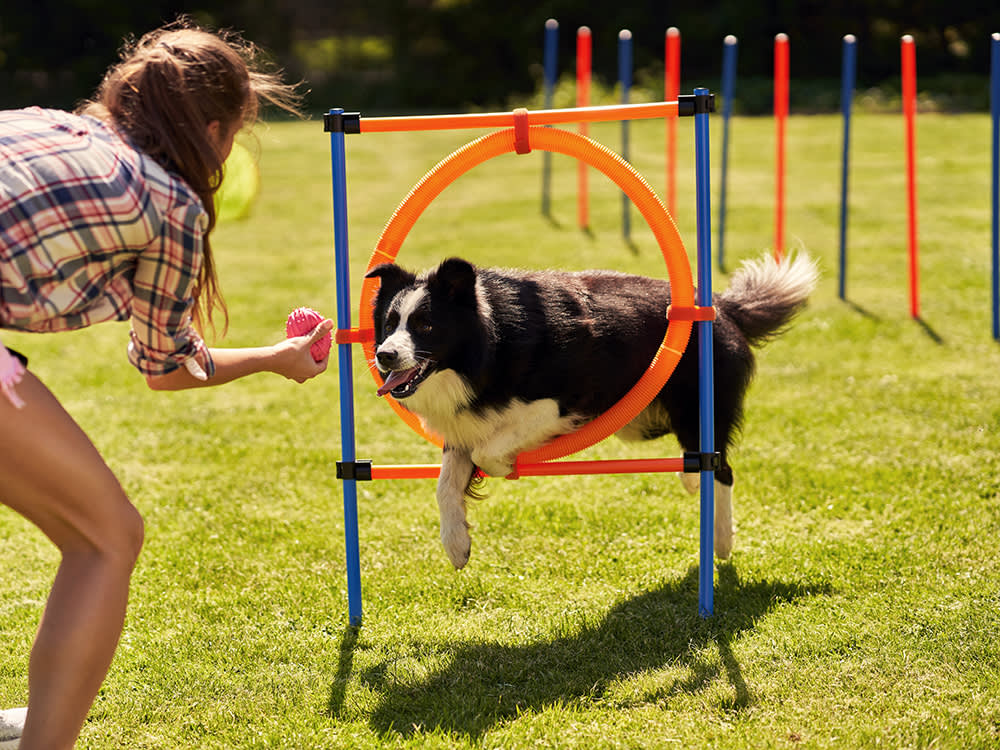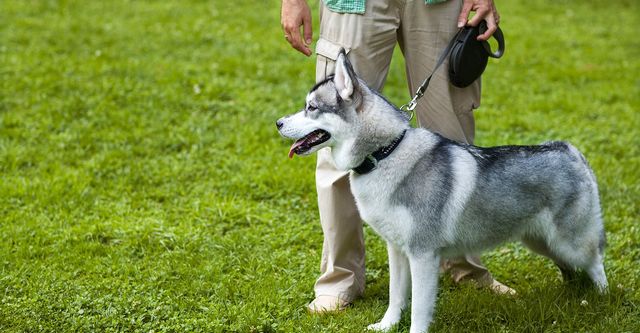Transform Your Pet's Behavior With Proven Training Techniques
Changing your dog's behavior calls for a nuanced understanding of their specific qualities and requirements, as well as the application of proven training techniques. Uniformity in your training strategy not only improves obedience however likewise promotes a much deeper bond of trust and regard between you and your pet dog.

Recognizing Pet Dog Actions
Comprehending dog habits is necessary for effective training and communication in between human beings and their canine buddies. Pets, as social pets, show an array of actions affected by genes, atmosphere, and experiences. Acknowledging these habits helps owners customize their training approaches to fulfill the particular needs of their pets.
Trick facets of pet habits include body language, vocalizations, and social communications. A wagging tail commonly shows excitement, while a lowered head may signal entry or concern. Recognizing these signals can assist proprietors analyze their pet dog's emotion and respond appropriately. In addition, socialization plays a crucial function in shaping actions; pet dogs that communicate positively with other animals and numerous individuals are generally a lot more adaptable and well-adjusted.
Additionally, acknowledging tension signals-- such as pacing, avoidance, or panting actions-- can protect against acceleration right into much more major problems. Proprietors who are in harmony with their pet's behavior can create a risk-free and caring environment, promoting trust and improving the training procedure. Ultimately, a deep understanding of canine behavior lays the structure for a harmonious connection and reliable training results, ensuring both canines and their owners grow together.
Favorable Reinforcement Techniques
Positive support methods are extensively recognized as one of one of the most effective methods for training pets, promoting a favorable knowing environment. This method entails fulfilling preferred behaviors with deals with, praise, or play, thereby encouraging the pet to repeat those behaviors (Dog training). Unlike corrective methods, positive reinforcement builds count on and enhances the bond between the dog and the fitness instructor
Rewards ought to be given promptly complying with the preferred habits to help the canine make the link. Uniformity is likewise essential; making use of the exact same commands and rewards helps the dog understand what is anticipated.
It is necessary to note that favorable support is not regarding bribery; instead, it has to do with strengthening etiquette. Gradually, as the pet finds out to link specific activities with positive end results, the frequency of benefits can be gradually minimized, transitioning to verbal praise or periodic rewards. This approach not only encourages obedience yet additionally advertises a happy and confident pet dog, making training a much more delightful experience for both events included.
Resolving Typical Problems
Resolving usual concerns during pet dog training is essential for guaranteeing a effective and unified partnership in between the pet dog and its owner. Several pet proprietors encounter behavior difficulties, such as extreme barking, leaping, and chain drawing. Recognizing the root creates of these behaviors is vital for reliable training.
Too much barking may come from dullness, anxiousness, or a lack of socialization. To mitigate this, offer enough exercise, mental excitement, and chances for social interaction with both people and other pets. Leaping can often signify exhilaration or a wish for focus. Educating the canine to rest upon welcoming can redirect this behavior positively.
Chain pulling is an additional common issue, regularly arising from a canine's enthusiasm to discover. Using proper leash handling strategies, combined with training protocols that motivate loose-leash strolling, can significantly improve this habits.
In enhancement, problems like source safeguarding or splitting up anxiousness need tailored techniques. Progressive desensitization and counter-conditioning can be efficient in dealing with these difficulties. By identifying and proactively managing these common problems, dog proprietors can cultivate an extra pleasurable training experience and enhance the bond with their canine companions.
Consistency in Training
Consistency is a keystone of efficient pet dog training, as it establishes a clear framework for the pet dog to recognize assumptions and habits. When cues, commands, and rewards are applied evenly, pets can quicker understand what is required of them. Irregular training can cause complication, resulting in undesirable actions that discourage both the fitness instructor and the pet dog.
To attain consistency, it is essential that all members of the household follow the exact same training techniques. As an example, making use of the same spoken hints and hand signals makes certain that the dog gets uniform messages. Furthermore, the timing of benefits and corrections need to be consistent; instant support enhances the possibility that great post to read the pet dog will connect the behavior with the end result.
Moreover, developing a regimen can additionally enhance uniformity. Routine practice, paired with structured routines for feeding, strolling, and playtime, help pet dogs expect and understand their setting, making them a lot more receptive to training. Ultimately, consistency promotes a complacency and count on, encouraging dogs for more information effectively. By devoting to a structured technique, instructors can advertise positive behavior changes and grow a genteel companion.
Building a Solid Bond
How can cultivating a strong bond in between a pet and its owner boost the training experience? When a pet dog really feels secure in its connection with its proprietor, it is much more likely to show favorable habits and be receptive to learning.

Additionally, a reputable connection can decrease anxiousness and behavioral problems, as dogs are less most likely to act out when they really feel understood and taken care of. As a result, prioritizing the advancement of a strong bond not only enhances the training experience however additionally adds to a better and extra well-adjusted pet. Ultimately, the journey of training transforms into a collaborative collaboration, leading to lasting behavioral renovations.
Final Thought

Owners who are attuned to their pet dog's actions can develop a safe and caring setting, cultivating trust fund and enhancing the training process. Ultimately, a deep understanding of canine habits lays the structure for a harmonious connection and efficient training end results, making certain both canines and their proprietors flourish together.
Addressing usual issues throughout pet dog training is important for guaranteeing a successful and harmonious relationship between the canine and its proprietor (Dog training).Consistency is a keystone of effective dog training, as it develops a clear structure for the canine to comprehend behaviors and expectations.In final thought, changing a pet's behavior with shown training methods requires an understanding of canine behavior, the application of favorable reinforcement techniques, and an emphasis on consistency